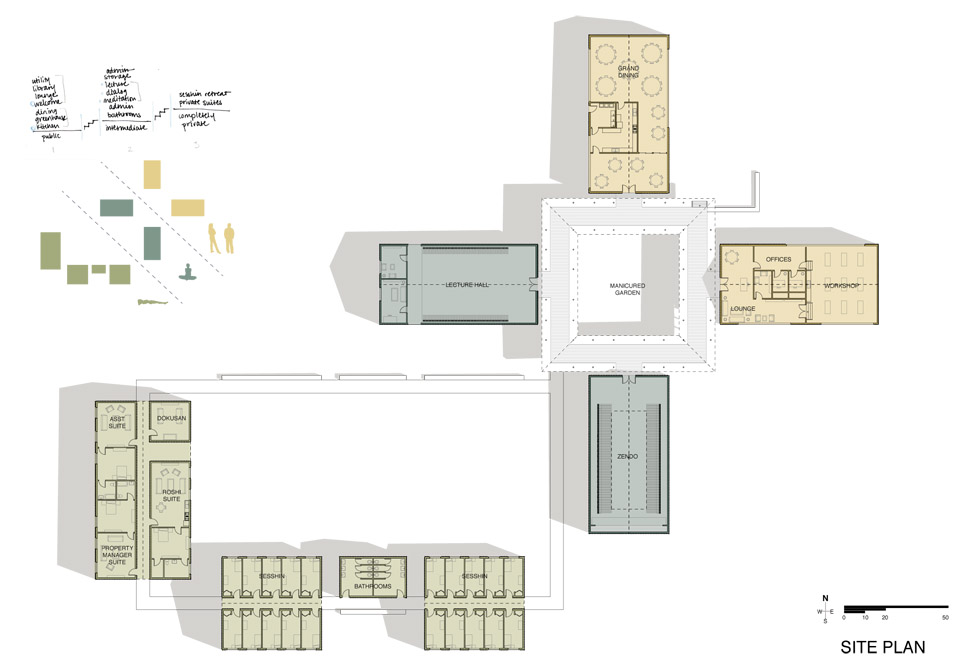Floating Zen Retreat
 The practice of zen is quieting your mental state and clearing your thought until you reach enlightenment. During meditation, it’s common practice in the zendo (meditation hall) to remove your shoes and sit facing the wall. You sit cross-legged with your eyes open and your hands resting on your knees. As part of your meditation, you concentrate on your breathing to clear your mind.
The practice of zen is quieting your mental state and clearing your thought until you reach enlightenment. During meditation, it’s common practice in the zendo (meditation hall) to remove your shoes and sit facing the wall. You sit cross-legged with your eyes open and your hands resting on your knees. As part of your meditation, you concentrate on your breathing to clear your mind.
For designing the zen center, I chose to concentrate on the zendo and the experience of meditating. I focused on two parts of the experience: setting yourself up to meditate and also the experience of meditating itself.
The act of becoming enlightened is about breaking away from the mundane earthly experience. I use the same metaphor through the entry sequence. The zendo, for the most part, is about breaking visitor’s connection to the ground—making the connection ambiguous. From the exterior, you approach at an oblique angle so that the reflective glass along the bottom of the zendo makes it appear as though the wildflower field continues uninterrupted beneath the building as it floats gently off the ground.

 As you move to enter the building, in the morning you cross over a threshold of bright light from the separated porch. Once inside, you see a giant slatted pod that seems to float easily within the room. This is the meditative space. At the opposite end of the building sits a statue of Buddha at the same height as the meditating pod. You remove your shoes, grab a cushion, and step up onto the slatted shelves of the pod—the final break from earth before meditating while sitting mostly on air.
As you move to enter the building, in the morning you cross over a threshold of bright light from the separated porch. Once inside, you see a giant slatted pod that seems to float easily within the room. This is the meditative space. At the opposite end of the building sits a statue of Buddha at the same height as the meditating pod. You remove your shoes, grab a cushion, and step up onto the slatted shelves of the pod—the final break from earth before meditating while sitting mostly on air.
When thinking about the act of meditating and concentrating on your breathing, the thought came to me: Facing the wall, where does your breath go? What if the wall appeared solid, but wasn’t? What if your breath went through the wall? This idea of your breath moving through the wall is on what I modeled the slatted pod. You look at a mostly solid wall, but are also able to meditate on your breath moving through the slatted walls.



